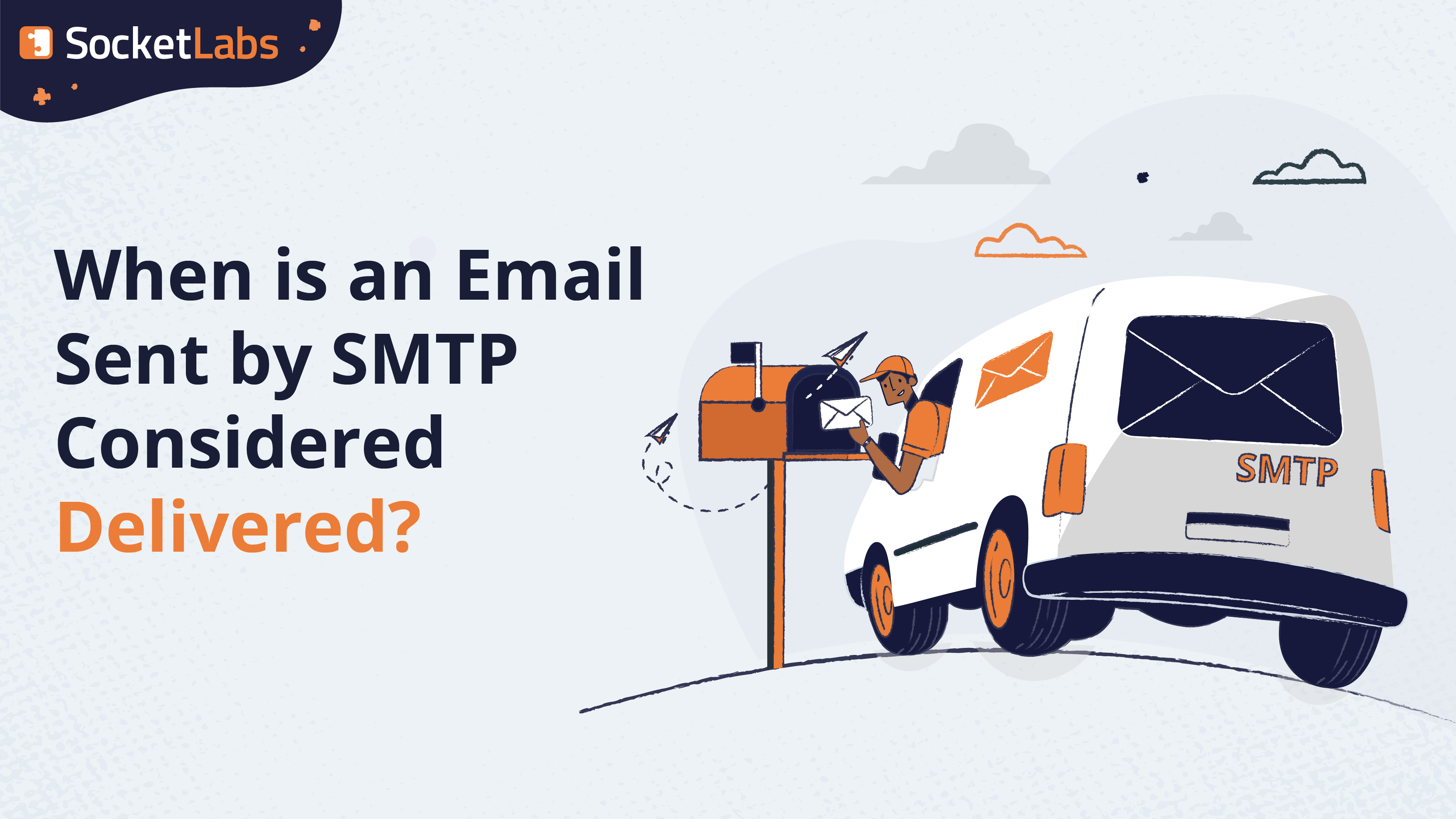
Ever wondered about SMTP email delivery and what it actually means for an email to be considered delivered?
Is it when the email reaches the inbox? Is it when it’s opened? Is it when it’s read?
Why don’t we stop asking questions and instead delve into the details of SMTP email delivery. We’ll go over how it works and shed light on what makes an email “delivered.”
SMTP Email Delivery Is Just One Part of the Puzzle
Simple Mail Transfer Protocol (SMTP) is SMTP email delivery a standard and often-used method of sending mail. However, there are additional things surrounding email delivery that an SMTP relay server can’t provide. These factors are things like sender reputation and best practices, authentication, data analysis, and a few other things. So, while technical SMTP will send and try to deliver mail, there are so many factors outside its control that will affect delivery.
Email Delivery vs. Email Deliverability
These two words are very similar, but they are two separate concepts. Before we can get into what makes an email officially delivered, we have to define what it is we are really talking about.
- Email Delivery
Email delivery refers to the process of sending an email to a receiving mail server. The receiving mail server decides whether to accept the message or not before it is placed in the recipient’s inbox or spam folder. The core of delivery is whether or not it is accepted. - Email Deliverability
Email deliverability relates to what happens after the message is accepted by the receiving email server. A sender’s reputation (deliverability) determines whether the email is placed: in the inbox, spam folder, or elsewhere. This concept is more about “can” than “how.” If your deliverability is terrible, it might prevent delivery. If your deliverability is middling, it’ll delivered but maybe not in your desired location. And, if you’re a deliverability master, inboxing should pretty satisfactory.
Why Is Delivery Important?
This is an easy question with an even easier answer. If you want people to see your email, you need it delivered. Amazing! Honestly, though, bounced or blocked mail can serious damage not only business objectives but reputation and trust in your brand. A customer wants a password reset but the email isn’t delivered? Where did it go, did it go to someone else? Is the customer worried the account will be compromised? It’s a slippery slope.
How Does Email Delivery Work and When is a Message Considered Delivered?
Determining when an email is considered “delivered” can vary on your perspectives. Here are three common answers:
- The email is accepted by the receiving mail server: At this stage, the message successfully leaves the sender’s mail client and is received by the mail server. However, the receiving mail server still needs to decide how to handle the message properly. It’s akin to sending a package to a mailroom at an office building where someone signs off on the package, but it doesn’t guarantee that the intended recipient received it. It’s an “At least it arrived” stance.
- The message is placed in the appropriate mailbox: In this scenario, not only is the message received by the mail server, but it is also placed in the intended recipient’s mailbox. Using the mailroom analogy, it’s like sending a package, having it signed off in the mailroom, and then delivered to the intended recipient. However, this situation doesn’t account for whether or not the recipient actually opens and reads the email. “It’s not at the destination until it is at the desk.”
- The recipient opens and reads the message: This answer takes the concept of “delivered” to the extreme, stating that an email is only considered delivered when the recipient opens and reads it. “Full commitment needed; no open, not a delivery.”
While all three answers may be correct depending on the context and email service provider (ESP), from a technical perspective, there is a specific criterion to consider an email delivered.
250 OK Status: The Technically Correct Answer
Technically speaking, an email is delivered when your mail server receives a “250 OK” SMTP response at the end of an SMTP transmission. This status indicates the SMTP communication was successful, and it is issued in response to every accepted command during the transmission process. As a sender, you may not directly notice the “250 OK” response, as it happens in the background after an SMTP email delivery, but it is generally safe to consider a message delivered once it arrives in the recipient’s mailbox.
Utilizing SMTP Monitoring for Email Delivery
Understanding SMTP email delivery and the criteria for considering an email delivered is a non-negotiable. While SMTP plays a significant role in getting emails into mail servers, other factors like deliverability and sender reputation also impact successful email delivery.
When you need someone to send email where there is advanced tracking and reporting, plus a bunch of other innovative features to better ensure delivery…hello! We are right here, ready to send for you!







